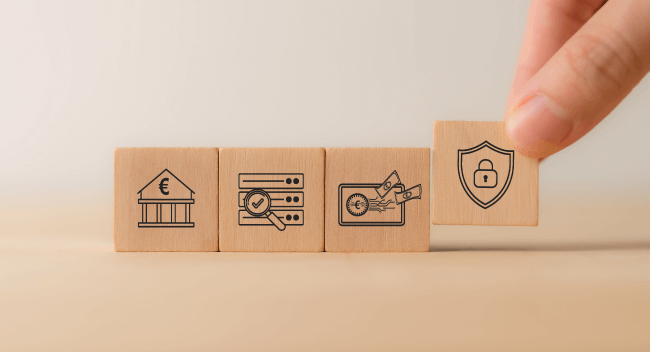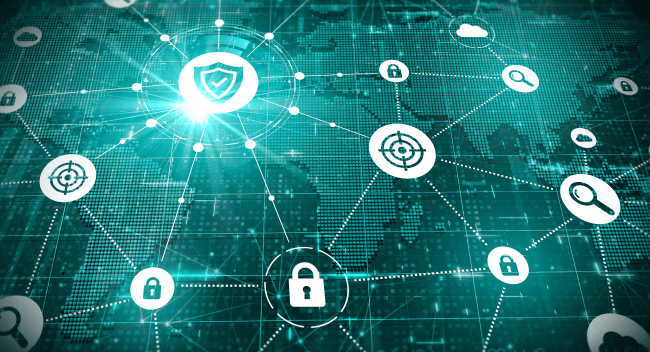In an era where uncertainty looms large—whether from natural disasters, geopolitical tensions, or unforeseen pandemics—the resilience of critical infrastructure has become a paramount concern. The European Union (EU), understanding the gravity of these threats, has embarked on a comprehensive mission to fortify its essential services against disruptions that could ripple across societies and economies. At the heart of this mission lies the Critical Entities Resilience (CER) Directive, a forward-looking framework designed to ensure that the systems and services we rely on every day remain robust, no matter what challenges arise.
The Rising Tide of Threats: Why CER is Necessary
The motivation for the CER Directive stems from the increasingly complex web of threats facing Europe’s critical infrastructure. While cybersecurity often grabs the headlines, CER is primarily concerned with a broader spectrum of risks—those that threaten the physical and operational resilience of essential services.
Imagine the fallout from a massive natural disaster, like the floods that have increasingly swept through European cities, or the debilitating effects of a terrorist attack targeting a power grid. These are the types of threats that the CER Directive seeks to mitigate. It’s not just about keeping the lights on but ensuring that the systems powering hospitals, the transportation networks moving goods and people, and the supply chains feeding millions can withstand and bounce back from whatever comes their way.
From Past to Present: The Evolution of Infrastructure Resilience in the EU
The EU’s journey to the CER Directive didn’t start yesterday. It traces back to the European Critical Infrastructure Directive of 2008, which laid the groundwork for protecting critical sectors like energy and transport. However, as the world evolved, so did the threats. The digital revolution brought with it cyber risks that the original directive wasn’t fully equipped to handle, while climate change and geopolitical instability introduced new layers of complexity.
Recognizing these challenges, the EU needed a directive that was not just reactive but proactive—a directive that could address both old and new threats. Thus, the CER Directive was born in December 2022, replacing its predecessor with a more expansive, all-encompassing approach. This new directive recognizes that today’s critical infrastructure is more interconnected and interdependent than ever before, and a disruption in one area can have cascading effects across multiple sectors.

What CER Aims to Achieve
So, what exactly does the CER Directive bring to the table? At its core, CER is about ensuring that Europe’s critical infrastructure can withstand and recover from a wide array of disruptions. The CER Directive mandates that each EU Member State identifies the critical entities within its territory and ensures they are prepared to face potential threats. This preparation isn’t just about patching up existing vulnerabilities; it’s about building cyber resilience into the very fabric of these entities.
Critical Threats Identified by the CER Directive
The directive identifies several key categories of threats that critical entities across the EU must be prepared to face:
- Natural Hazards: These include extreme weather events such as floods, earthquakes, and wildfires, which have become more frequent and severe due to climate change.
- Terrorist Attacks: The directive considers the threat of terrorism targeting critical infrastructure, aiming to mitigate the potential for large-scale disruptions.
- Insider Threats: These are risks posed by individuals within an organization who may have malicious intent, whether due to radicalization, coercion, or other motives.
- Sabotage: The CER Directive also covers deliberate actions intended to damage or disrupt essential services, such as acts of sabotage against power grids or transport networks.
- Public Health Emergencies: In light of the COVID-19 pandemic, the directive includes provisions to strengthen infrastructure resilience against widespread health crises that could disrupt societal functions.
- Hybrid Threats: These involve a combination of conventional and unconventional tactics, including disinformation and economic coercion, aimed at destabilizing societies.
The CER Directive mandates that each EU Member State identifies critical entities within these sectors and ensures they implement appropriate measures to withstand these threats. These entities must also report any incidents that significantly disrupt their services and conduct regular risk assessments to stay ahead of potential vulnerabilities.

Entities Covered by the CER Directive
The CER Directive targets a diverse array of sectors that are essential to the functioning of society and the economy. These sectors are considered critical because any disruption to their services could have severe consequences, potentially affecting multiple EU Member States. The directive identifies 11 key sectors, including energy, transport, banking, financial market infrastructures, health, drinking water, wastewater, digital infrastructure, public administration, space, and the production, processing, and distribution of food. These sectors are considered critical because any disruption to their services could have severe consequences, potentially affecting multiple EU Member States. The interconnected nature of these sectors means that a failure in one could trigger cascading effects across others, underscoring the importance of safeguarding their cyber resilience.
Key Obligations Under the CER Directive
The CER Directive imposes several critical obligations on organizations identified as critical entities. These obligations are designed to ensure that these entities are not only aware of the risks they face but are also actively working to mitigate them.
- Risk Assessment: Critical entities must conduct comprehensive risk assessments that take into account natural and man-made risks, including cross-border and cross-sectoral threats. These assessments must be updated at least every four years or sooner if significant changes occur.
- Implementation of Resilience Measures: Based on the risk assessments, organizations are required to implement proportionate technical, security, and organizational measures. This includes ensuring the physical protection of facilities, establishing robust business continuity plans, and training personnel to respond effectively to incidents.
- Incident Notification: Critical entities must notify the relevant authorities of incidents that significantly disrupt or have the potential to disrupt essential services. This notification should occur without undue delay, and no later than 24 hours after becoming aware of the incident.
- Supervision and Compliance: National authorities will supervise critical entities to ensure compliance with the CER Directive. This will involve regular audits, inspections, and the imposition of penalties for non-compliance as determined by each Member State.
- Development of Resilience Plans: Entities must document their resilience strategies in formal plans, which should be reviewed and updated regularly to reflect the evolving threat landscape.
- Designation of a Point of Contact: Organizations must appoint a specific point of contact for communication with national authorities. This ensures clear lines of communication during incidents or compliance checks.
- Personnel Background Checks: To mitigate insider threats, entities are required to conduct background checks on personnel in sensitive positions, particularly those with access to critical infrastructure or sensitive information.

The CER Directive also places significant responsibilities on EU Member States. Governments are required to conduct risk assessments for each sector every four years, the results of which must be shared with the relevant critical entities. Additionally, governments must support these entities by providing guidance, sharing information, and offering tools and resources to enhance cyber resilience.
Non-Compliance and Penalties
The CER Directive mandates that critical entities must comply with the requirements set by the directive, which include conducting risk assessments, implementing cyber resilience measures, and promptly reporting incidents. However, the directive does not specify uniform fines or penalties at the EU level. Instead, it leaves the responsibility for determining sanctions to individual EU Member States as they transpose the directive into their national laws. This means that the penalties for non-compliance with the CER Directive will vary depending on the regulations established by each Member State.
Overlap and Distinctions Between NIS 2 and CER Directives
The NIS 2 and CER Directives, while each focusing on different aspects of resilience, work together to create a robust protection framework for critical entities in the EU. The NIS 2 Directive is centered on strengthening cybersecurity, targeting digital infrastructure and systems to protect them from cyber threats. On the other hand, the CER Directive has a broader focus in terms of physical and operational resilience, addressing a wide array of risks like natural disasters and sabotage.
When it comes to understanding how these directives apply to a particular entity, the following guidelines should be followed:
- Entities identified as ‘critical’ under the CER Directive are automatically considered ‘essential’ under the NIS 2 Directive. This means they must comply with both the cybersecurity requirements of NIS 2 and the broader resilience measures under CER. To reduce the administrative burden, authorities are encouraged to harmonize incident reporting and supervisory processes across both directives.
- The CER Directive does not apply to issues covered by the NIS2 Directive, specifically cybersecurity matters. For entities that fall under both directives, the CER Directive will only govern areas that are outside the scope of NIS2. However, there is an exception for the digital infrastructure sector: entities in this sector are considered ‘critical’ under the CER Directive due to the ‘essential’ services they provide to other sectors. Therefore, these entities must comply with both the CER and NIS2 directives, ensuring comprehensive protection against a broad range of risks, including but not limited to cybersecurity.
Together, CER and NIS 2 create a unified approach that addresses both the physical and cyber aspects of resilience.
BC-DR: Ensuring Resilience under the CER Directive
From the perspective of CER Directive, it is important to factor in robust Business Continuity (BC) and Disaster Recovery (DR) strategies as critical components of resilience planning for critical entities. In today’s increasingly interconnected infrastructure, the continuity of operations heavily depends on the availability and protection of critical data.
One of the key strategies in achieving this is the implementation of replication mechanisms within and across sites. By setting up two-way and three-way synchronous mirrors, critical entities can ensure that data is not only backed up locally but also replicated across multiple nearby locations. This redundancy allows for instant failover to a secondary system or site in the event of a failure, eliminating downtime and ensuring that essential services can continue uninterrupted. This helps ensure HA during both planned and unplanned events of downtime avoiding single points of failure.
Furthermore, creating DR copies through asynchronous replication is vital for safeguarding against catastrophic events that could affect primary data centers. Asynchronous replication allows data to be copied to a remote location with minimal latency, ensuring that a recent version of the data is always available for recovery, even if the primary site is compromised.
In addition to these replication strategies, leveraging backups, snapshots, and Continuous Data Protection (CDP) is crucial for restoring systems to their last known good state in the event of data loss. These technologies allow critical entities to recover quickly from data corruption, cyberattacks, or physical damage, ensuring that the continuity of essential services is maintained and that the impact of any disruption is minimized.
By integrating these BC and DR strategies into their resilience plans, critical entities can better protect their operations against a wide array of threats, aligning with the CER Directive’s goals of maintaining robust and reliable infrastructure across the EU.
A Resilient Future for Europe
The CER Directive is more than just a regulatory measure; it’s a crucial step towards a resilient future for Europe. In a world where the unexpected has become the norm, ensuring that our critical infrastructure can withstand and recover from any disruption is not just desirable—it’s essential. The directive requires Member States to have transposed it into national law by October 17, 2024, marking a significant milestone in efforts to strengthen and secure essential services across the continent. The onus is on EU Member States and critical entities alike to rise to the challenge, ensuring that the services that power our daily lives remain steadfast in the face of adversity.
By proactively addressing a broad range of threats and implementing robust cyber resilience measures, the CER Directive sets the stage for a more secure and resilient Europe—one that is prepared for whatever challenges the future may hold.
